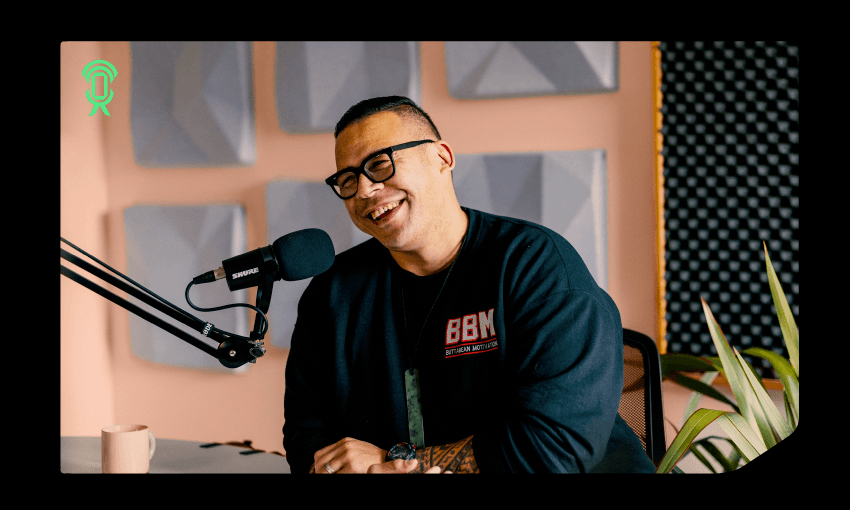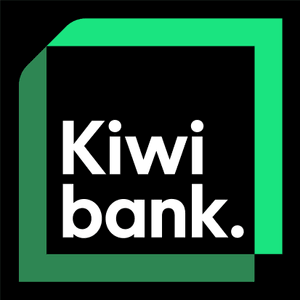A new series in partnership with Kiwibank, This is Kiwi celebrates extraordinary achievements by ordinary New Zealanders. In the first episode, host Jane Yee speaks to Dave Letele, winner of the 2022 Kiwibank Local Hero of the Year award.
Affectionately known as the Brown Buttabean, Dave Letele is a shining example of how one person can defy the odds to make a profound difference in the lives of others. He’s faced a number of challenges throughout his life, but refuses to let that adversity define him. A successful sporting career in both professional boxing and rugby league made his name well-known around Aotearoa, but it’s outside the boxing ring and off the field where he has found his true calling.
Dave knows the power of transformation, and set up the BBM (Buttabean Motivation) foundation for those who want to reclaim their health and future with free fitness classes, mentoring and nutritional guidance. As a community leader, he advocates tirelessly for rangatahi, empowering them to break free from the cycle of disadvantage and embrace a future filled with opportunity. All of this mahi led Letele to winning Kiwibank Local Hero of the Year in 2022.
Letele joined Jane Yee on The Spinoff’s new podcast in partnership with Kiwibank: This is Kiwi. Read an excerpt from the full interview below.
Jane Yee: I feel like we could probably do a Lord of the Rings style trilogy on all the things that you’ve achieved in your lifetime. But let’s start with being named Kiwibank Local Hero of the Year in 2022. Do you feel like a hero?
Dave Letele: I never think of myself as a hero. It was awesome to get that award, especially being nominated from the people that you serve, that was great, but I don’t think of myself as a hero.
You must be doing something right if you get named Local Hero of the Year. If I was someone coming up to you on the street, and I said “What is it that you do?” What would your answer be?
I help people. That’s it. We help give people a hand up. I was very blessed to have some people in my life that gave me a hand up. When I moved back here in 2014, I didn’t have one cent in my pocket and I was very depressed, hated my life. I was over 200 kilos, in bad shape physically and worse mentally, I didn’t have my children.
An old league friend opened up a gym called Habitat for Fitness in Kingsland. His name is PJ and he played league with me back in the day and when he saw me, he goes, “What the heck’s happened to you? Come I want to help you. I’m just opening a gym. If you turn up I’m going to help you.”
There was a handful of people that invested in me to give me a hand up with no expectation of anything in return. And that’s all we’re doing now, is paying it forward. So if people ask me what I do? I just help people.
How integral is that for you – in terms of your kaupapa in helping the community – the people that helped you to get to where you are?
I look at where we are now. We’re very blessed. We’re living a nice life with all my boys back and my wife and son, we’re helping all these people and doing all these great things in the community. But it wasn’t too long ago that me and my wife and three children were staying in a garage with no kitchen. There wasn’t too long before that where I was staying in a sleepout. In the community home in Clendon I was living with people just out of prison. So I never forget those times and the struggle.
But there were always people around that would come in, and who really helped me. People that would just turn up to my house and alter the way I was, would just give me 50 bucks or come over and bring some food, and it would always happen at just the right time. Because it was around those times where I was thinking, “Man, I can’t handle this, I can’t handle having no money. I can’t handle being broke”, and I was tempted to go do silly things. And always people came around just at the right times, through the grace of God, and just helped me. So that’s what we do now.
You’re an athlete – once an athlete, always an athlete – and you love exercise. But you must come across a lot of people who don’t have the same passion for exercise as you do?
Yeah, exercise for me is my therapy. I’m not training to have a six pack. I’m training to be happy, and to get frustrations out. When I started my journey, I got up off that single bed I was sleeping in, I borrowed my sister’s car, borrowed petrol money, which was humiliating, I drove to One Tree Hill and I went for a walk. I went for a walk around the summit, and it was such a beautiful place. While I was walking around the hill, I was no longer thinking about how crappy my life was. All I was thinking about was, “Man, this is a steep hill. Why did I choose this place?”
But afterwards, I had the natural endorphins of exercise running through my body, and my brain had a chance to rest. It wasn’t thinking about things so it could handle life for a little bit more. And that’s what I talk about with people. That’s what exercise is. It’s not about training for marathons, it’s going for a walk with your family somewhere beautiful to take your mind off things. That’s exercise, and it’s so beneficial for you once you get in the routine.
What’s the one thing that you would like everyone who’s listening to take away from this kōrero?
I just encourage everyone that’s going through tough times at the moment – and there’s lots of people going through tough times – I really want to encourage that greatness comes from the struggle. You’ve just got to embrace it and not be tempted to take shortcuts, because those shortcuts always go the long way around.
Keep working, you’ll get there and when you do get there, never forget where you were. It’s always good to come back and help others, and trust me when I say you’ll always be blessed in return. When you help others you’re going to be blessed tenfold. People over-complicate and think “I want to help as many people as he’s helping,” but go help one person and that feeling of helping one person will just fill your heart.
This interview has been shortened. To hear the full kōrero, listen to This is Kiwi wherever you get your podcasts.


